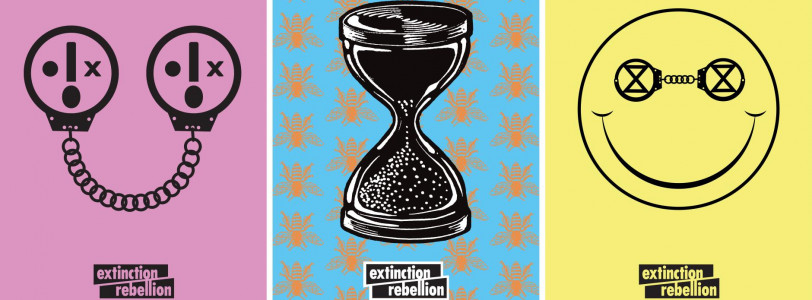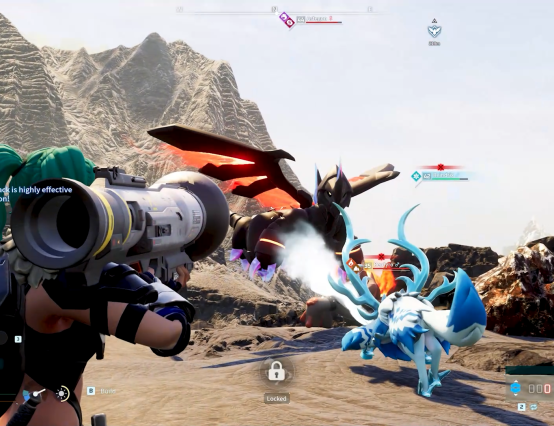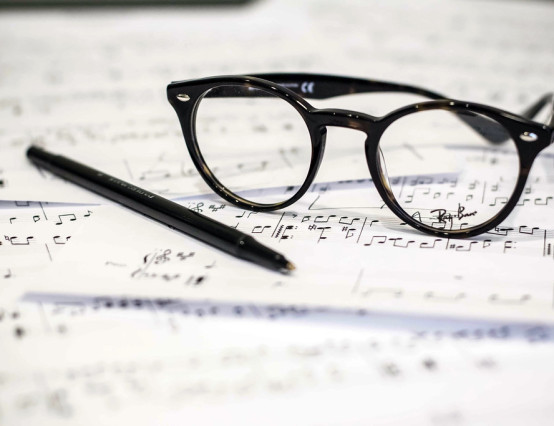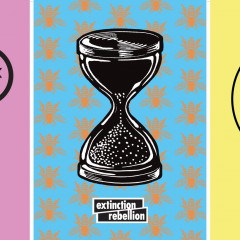Full Transcript
Chris Hill (00:07):
Hello, there and welcome to a podcast for Voice Magazine, the youth arts magazine for young people interested in arts and culture. My name is Chris and today I'm with Clive Russell. We're going to be talking about some of the art style choices of Extinction Rebellion and how they serve the cause, how they adapt to be practical in protests and some of the various aesthetic decisions made by Extinction Rebellion in their art style as it's presented to the public.
How are you there, Clive?
Clive Russell (00:45):
I'm good, thank you. Yeah, it's not raining!
Chris (00:49):
It's not raining! It's, lovely out all of a sudden, and I thought we were already in the grips of autumn, and we seem to be having some kind of second summer going on. It's very confusing.
So, first of all, I think it's safe to say that XR — I'll refer to Extinction Rebellion as XR mostly because otherwise I'm gonna trip over my own tongue — so XR kind of become synonymous with the Extinction Symbol. We kind of see it everywhere’s it’s a massive part of the protests. How exactly did XR come to be associated with the Extinction Symbol?
Clive (01:20):
Well, back in May 2018, four of us had a meeting with Roger Hallam, who we had worked with previously, and he read us the sort of formative version of the talk Heading for Extinction and What to Do About It. And it was very clear at that point that whatever Extinction Rebellion came to be called, it needed to be obvious and it needed to be stand out from the sort of crowded ecospace of the time. And the Extinction Symbol is something — I live in East London, and it's something that knocks around a bit on the street. And it's been around since about 2011. And one of our group Claire Farrell asked me, “can you, design something like this?” and I was like, well, why would I? Because it's already been designed, why don't we ask ESP if we can use it?
Clive (02:21):
So we did. And they quite kindly said yes, because, you know, why wouldn't he? It was, designed expressly for that purpose: to make people understand that extinction was happening, whether it be animals or humans or — well, not that humans aren't animals — but so actually he was very much a part of the process at the beginning. He even cut up one of the first blocks of the symbol with Miles, so he remains part process to this day. It was difficult because obviously, it launched the symbol into a space where it became more famous, but at that point, we didn't know that was going to happen to be honest, so there was an expectation — and there should be an expectation with all forms of activism, and activity that you take on yourself that actually you're probably not going to be successful. So then, if you are, it's wonderful, and if you not, it doesn't matter,
Chris (03:19):
And that sort of answers my next question, because I was going to ask: has there been any conflict with the original artist since XR and the Extinction Symbol have become so kind of synonymous with each other? But by the sounds of things, that's not the case.
Clive (03:35):
No, I mean, ESP has been very helpful in informing some of the philosophy behind the rest of the art program. For instance, we don't create any merchandise. Not that we would have done that anyway, but it makes that decision much easier, and also much easier to tell people they can't within the movement because that's already an express point of the Extinction Symbol.
Chris (04:04):
The V&A recently announced that they were featuring several items of XR — I'm trying to think of the right word because these are you say, it's not merchandise, it's not marketing it’s… I guess the best term I can use is “protest material” — and the V&A collection now has several items of these XR artefacts that they're now holding in the permanent collection. How does the movement feel about that?
Clive (04:33):
I think you know... you can only talk from a personal perspective. You can never talk from a movement’s perspective. I'm sure there are certain people in the movement that, that find it very difficult. And so these decisions are difficult to make, but the reason why we engage with the V&A and other museums for that matter is firstly: the V&A is free to enter. So we demand that our work is free to see. So it was freely produced, and it should be freely accessible by all. But also it's important for us because if the V&A is showing our work, then it means that people like Priti Patel can't claim that we're terrorists because how can we be terrorists if our work is in the V&A? And so it creates a sort of cultural dilemma for people. And also not everyone wants to see our work on the street; some people are more timid, some people want to experience it from afar, and why would we deny them?
Chris (05:36):
It sounds then that kind of accessibility, and free-to-experience art is a hugely important element of XR’s art and the art style XR is going for.
Clive (05:48):
Yeah, I think if you're going to sort of begin to question the ideas of businesses-as-usual, you have to question not engage in business-as-usual yourself. And I think it's really important that you know, galleries are really difficult spaces. Even when they're free, they're not necessarily very inclusive. So trying to create a sense of inclusivity, drawing people into these spaces is quite important. Culture is an incredibly important part of the way society is formed and denying people — whether by admission fee or by the presentation of a building — access to these spaces is really bad because everyone should have a part in the culture that they spend their time in, and so I think accessibility is really, really important to us, and the idea of inclusivity is really, really important.
Chris (06:49):
So on a related note: XR prides itself on being a decentralised movement, the unified aesthetic style of XR’s rebellion art is perhaps then all the more impressive, because it seems in such contrast to XR’s decentralisation, what do you think has allowed for sort of widespread adoption of that style?

Clive (07:12):
You know, I suppose it goes back to moments and interaction with the public, if you can inspire people, to follow your example is better than telling people what to do. And if you're aware of the design program, there are very little rules in it. I mean, it only asks you to use the colours, use the logo and use the typeface. Beyond that, there are no rules. We don't tell people how big the logo needs to be or what colour they should use and how the colours should mix. And there is no real rule behind any of that because it's open to interpretation. So the way we built it was as a set of building blocks that other people can build upon, but also with a low bar/barrier of entry so that you don't have to be, you know, a professional designer to use it.
Clive (08:08):
That's why we designed a font because actually, font in and of itself can be used by anyone. You can use it in Word, you can use it wherever you like in any of the open-source programs online. And so again, you know, people can easily make their own posters. So again, you're giving them tools. So you don't give people instructions, you give them tools. And I think there's a massive difference between those two things. And I think when we talk about, you know, people talk about branding, but we don't talk about branding. We talk about presence-building, and I think there's a big difference between those two things. I mean, branding in and of itself is quite a negative word. It obviously derives from the branding of cattle, slaves, and all of that sort of thing. And also it talks about ownership.
Clive (08:58):
Whereas if you're building a presence, you're actually building something that is more inclusive. And so, again, it's, it's combining the ancestry or the craft actually because I don't consider myself an artist. I consider myself a designer; people within the movement consider themselves designers and craftsmen and or craftspeople. And it sort of I think it's far more inclusive when you look at it from that point of view. I'm sorry, I've lost my train of thought, but it's really interesting, but I think the more you can give people tools, the better. I think we've, you know, obviously, I've worked as a professional designer. I am a professional designer, and you know, they often create guidelines which tells everyone what they need to do. And that's kind of… it's not very helpful. It's not very inclusive, and it also doesn't really build on anything because it means that design is locked in a space that you can never leave, which I find incredibly difficult.
Chris (10:10):
Yeah, it makes it incredibly limiting in terms of innovation, I guess, from that point as well, that there's very little way that they can, as you say, it kind of expand beyond its initial boundaries. I think one of the things that I was most fascinated by when I looked over the design document as part of the research for this piece, and then, looked at various images from kind of various protests and from what I've seen on the news and in life — real-life protests that I've seen — is that there does appear to be this kind of unified art style, even with so little rules.
Clive (10:49):
No, but I think some of that stuff has been done by a large group of individuals around the centre of XR. So, for instance, the design program was released just after April with the express desire to recruit other professional designers as individuals to interpret it so that those people entered the space, but also lots of people at local levels all around the country picked up the work and run with it as well. So you then have, you know when the protest hits the streets, you have a sort of top-level of, of centrally created hand-painted material at one level, then you have all this wonderful hand-painted and hand created stuff at another level. And then you have, right down to people sort of copying the style of the fonts in the way they write their cardboard banners, which is amazing and sticking stuff to things, like downloading posters and just printing them and slapping them onto something.
Clive (11:58):
And that's, that's all wonderful. It's just, it's all about trying to give people stuff to use and start them creating things, because actually, you know, creativity is a very positive way of dealing with, well, the essential threat of extinction! It's a very positive way of you know, when you make something and especially when you make something with other people, then you talk together, you talk about your problems, you begin discussing so many different things. And a lot of the ways society is sort of lost that and sort of reminds me of going back to what I was saying about the guidelines, the drudgery that creates within professional design work. If you're a designer and you're stuck following the guidelines of another designer, then that's not much of a working life effectively, you can't express your individual approach to design. And that's incredibly problematic because it means that design never moves. It's locked in a sort of paralysis and actually our craft and design our expressions of ourselves as a society, as a culture that needs to always move forward and not be stuck in this sort of, well, I mean, I'll use a sort of leftist phrase: a neoliberal paradigm. It needs to go past that and begin to express something new and far more exciting,
Chris (13:24):
I guess, in a way then the art, the art style that XR has created has sort of almost created a visual language of protest then. You don't even — obviously you need to hear the message behind it — but you don't necessarily need to hear someone standing on a podium and telling the world about this existential threat if an image will do that same thing necessarily. So if you don't have the platform or the ability to, you know, metaphorically stand up and get your voice heard, there is a way to do so, visually that's in a way kind of the most accessible form.
Clive (14:07):
Yeah. The theatre of protest is not a modern thing. I mean, you know, within the last century, I mean — and it goes back beyond that as well — but so you have the suffragettes, and that was all about theatre — so they all dressed in a certain way: the use of the purple, the green and the whites, and consistent use of fonts as well with the with the suffragettes. So a lot of the things we've done have been done before, and we looked back at the past for where movements were successful, especially visually successful. And there was a definite lack of success with some of the more recent expressions of protest because they try to tap into that middle ground, trying to sort of express themselves in ways which people would find easy. And I don't think necessarily people want things that they find easy.
Clive (15:08):
They want things that they find inspiring. And those two things are not the same thing. And I mean, the suffragettes Paris, ’68, the Situationists were all major influences on what we produced. But it was very giving that the symbol in and of itself when you place that on a flag is an incredible, incredibly powerful metaphor. And it suddenly becomes a very uniting symbol. So, you know, there's nothing I liked more, especially, you know, during April and October than seeing loads of symbol flags fluttering in the wind. It was an amazing sight in lots of different colours, but all the symbols in black, it looks wonderful.
Chris (15:55):
As you say, it's incredibly, visually impressive to see. Speaking of fonts — and I'm not entirely sure I can repeat its name here because theoretically we're not allowed profanity on these podcasts! — but I'll refer to it as X caps for now, although its original name is utterly brilliant and I love it. Was that… how did that come about? Was it an active kind of communication between XR and the creator, of the font… did it just sort of come about where the artist came along and said: “Hey, I've made you guys a font!”?
Clive (16:28):
Well, I designed the font!
Chris (16:31):
Oh, you are the font designer! Well, I think it's brilliant!
Clive (16:35):
Thank you. It was created as a group, as I mentioned earlier, it's an easy route to allow people to quickly communicate their parts of the movement. Because if they use the fonts, there's an instant visual recognition and the font itself came from some, an old version of Futura Woodtype that Miles and myself found then miles then printed it and then I remodelled it into a digital font. And part of the reason for that was because there was, we wanted from the beginning to have this play between retro and modern technologies. So that's when we were protesting on the streets, people could print directly on people's clothing. And the original thought was that perhaps we'd use the original Woodtype to do that. But of course, if you've got that many people that you want to print on their clothing, then that becomes incredibly restrictive.
Clive (17:48):
So we now actually use the digital fonts and put it through a process, turning it back into wood to be able to print on some people's clothing, but there's toing-and-froing between techniques that are past and present. And actually, everything is present; it's never past is a big part of what we developed for workshops. So creating again, creating spaces where people can enter into them, have some sort of interaction with people, talk to people and learn something in the process. So learning how to block print is a really fun thing to do, but also in the process, you're beginning to chat and discuss various different things that are happening around you. So the discussion is probably more important than the act of printing, but they're both activities that can happen anywhere at any time.
Clive (18:41):
So it was very easy to print, and admittedly, there was a lot of experimentation by Miles to find the easiest way to allow this to happen. But that connection with craft, this is something William Morris talks about, is that idea of mindful craft. It really does help people to not be on a computer to be doing those things that when considered basically business-as-usual. You know I enjoy printing with block printing and, you know, we also experiment in screen printing, but that's way too difficult to do when you're out in the open, especially if it's raining and what have you, and you have to print quite quickly with screens, but we've blocked prints in. You can, you can take your time and enjoy it.
Chris (19:29):
Yeah. And I guess that again, kind of answers my next question of the origin of the style of woodblock and linocut prints which I think otherwise as someone whose mother made kind of stamps and woodblock prints herself, I kind of grew up around them, but I appreciate that they're not necessarily part of the modern art scene as much as other mediums. So I was going to ask kind of where that comes from, but it sounds like you've already answered that question. It's sort of a part of an interactivity thing and an accessibility as well as the, as you say, a mindful arts and craft process.
Clive (20:10):
Yeah. And I think it's that reconnection with the past is really important. We genuinely often think of ourselves as being more advanced than humans who came before us, and we really aren't you know, and a lot of that is shown by the way that our problem solving is just the same today as it was in Roman times, and beyond that. And then it, you know, if we can begin to say, well, look, you know, you can make this stuff at home. You can get yourself a bit of lino you can cut it, you can make a print. I mean, they may not turn out quite as well as Miles’woodcutss, ‘cause he's very good at doing it, but with practice you will turn out really beautiful work and also you’ll really enjoy doing it. And that's something that we kind of lose in our current day communities. And also it's that idea of doing that together is even more powerful. You know, if you, if you can set up an evening where you just sat around making things together, then that's a really nice time had by your local neighbourhood.
Chris (21:28):
So I think my next question would be the bee symbolism; the bee appears quite a lot within both the stylebook and within XR’s kind of art style as a whole. What do you think the symbolism of the bee is as part of XR’s art?
Clive (21:49):
The bee is… it's a simple metaphor for the busy-ness and working together. You know, it was originally the bee, and the hexagon were created to express the idea of citizens’ assemblies which is a very difficult idea to express, which is their sort of third demand of Extinction Rebellion that the government sets up systems assemblies to deal with the climate and ecological crisis and citizens’ assembly is very much like a very large scale version of a jury where people are selected to represent all parts of society at random, and then brought together to bear witness. So the experts from both sides of an argument can then pass judgment. And then the idea of this is that then the government follows that judgment. So the idea of bees because they work so wonderfully together, I mean, we're very simple, and you kind of have to be very simple in your metaphors. And also they're seen as industrious. So not industrious in not the way we understand industry today; industry today is something that belches fumes into the atmosphere, but industry is actually about working together for positive aim.
Chris (22:15):
Yes, exactly. I can see how the hexagon also gives a sense of community and kind of fitting together well because you know, it perfectly —as someone who’s a bit of a maths geek: it perfectly tiles the plane. And so it's one of those shapes that is famous for interlocking, and I guess it fits into the beehive thing.
Clive (23:40):
Yep. And Buckminster Fuller and all of those sorts of things as well.
Chris (23:43):
Absolutely! I love a fellow maths geek! So I seem to be getting a general impression from the art style of XR is this kind of idea of kind of individualist collectivism, this idea that everyone has their own thing to bring to the collective, but the collective acts as a whole, do you think that's an accurate interpretation or…?
Clive (24:06):
Yeah, I think that was a spot-on interpretation. It's exactly the intents, the design program and the work we did was to give it away effectively and allow for that individualism to happen in a responsible and progressive way and collectively, communally. But yeah, I think that's a really concise and accurate expression of what we intended.
Chris (24:34):
Oh, thank you! So my next question it sort of has to do with the kind of the colours that XR use are very vibrant, they stand out in a crowd. I guess there are practical elements to that right? There is an element of sort of protest-practicality: how can we be seen in a huge public space? That wouldn’t work with one that is more greys and browns necessarily than these bright neon colours.
Clive (25:06):
Yeah. And there was also a sort of idea that in some way it's one — again, it opens up that space. So, you know, there's not one colour. So there isn't that sort of — cause people do actually have a genuine stock reaction to certain colours. So opening up the space and allowing it to exist with many colours, it again allows more space for interpretation, but also that, it was very obvious that if you just used green or something like that, then we genuinely wouldn't stand out. And one of the inspirations for the colour palette was Sir Eduardo Paolozzi whose work that you can see in Tottenham court road station. So he did all the tiled mosaic stuff in there. And he was an amazing artist. And one of this country's great modernists — I suppose, pop artists see, he sort of was kind of the world's first pop artist — but so he inspired some of the colours, but the real reason behind it is that inclusivity and the allowing the space for people to interpret things in their own way.
Clive (26:32):
And the idea that if the colours aren't strong, then, you know, I mean, what you're saying about yourself as well, I guess!? And there are certain colours that have certain political connotations as well. So it was, you know, we wanted desperately to avoid those connotations.
Chris (26:56):
So I guess sort of wrapping up: these kinds of questions as a more general point. And I guess this goes back slightly to what we were saying at the beginning. At what point in the development of XR as a movement, did it become clear that it needed an art style?
Clive (27:13):
Well, so I suppose it goes back beyond the start of Extinction Rebellion. It goes to something we did prior to that called Stop Killing Londoners which was also done with Roger Hammond where we tested roadblocks. So it was very clear…. So to make a short story long: myself and Charlie, who is my business partner, we'd been working a lot with Claire Farrell and Miles on another project. And Claire rang me one day and said, “Oh, I need to find a seven-meter long banner to block the Marylebone road. It needs to say this, and can you do something really cool with it? So I made a banner and put a little graphic which we called “Dead Child” on it.
Clive (28:19):
And then she said, Oh, come down, see, what's see what's going on. So I went down and I thought “I’ll just take some photos. It should be quite fun.” and ended up blocking the road, dancing in the street to a roadblock disco. And then I met Roger Hammond, and I said, well, look if we, if we're going to do this again and do this, you know, on a bigger scale, give us more time and we'll be able to create something far more impressive and also far more long-lasting. And, you know, that's kind of the beginning of Extinction Rebellion. So, you know, both in the roadblocking as a technique because it proves that kind of thing works, but also in the need to have strong artwork that tells people about your presence because blocking a road with your body is pretty scary stuff. But if you've got a big long banner and several bodies, then it becomes infinitely more easy. And also then if you've got strong messages and strong colours on top of that, and even more people, then it becomes easier again. So it's sort of taking those lessons learned from, from the Stop Killing Londoners phase of Extinction Rebellion, then applying them to Extinction Rebellion, but also having that, that sort of I think it was a five-month period to develop work was really important.
Chris (29:55):
Well, Clive, it has been wonderful to have you on and thank you so much for coming on. Just to close out then I think we'll go for a slightly more lighthearted question because I had a question from one of the other contributors Bea: how did the pink tractor come about?
Clive (30:13):
The pink tractor? So there's the pink boat, obviously. So there was the pink boat on Oxford circus, and the pink tractor was XR Farmers sort of response to the pink boat. So basically, you know, if you can, if you can have a pink boat blocking Oxford circus, then surely you can have a pink tractor as well. Why not? Again, it's one of those wonderful things done in one place inspiring a group of people to do similar somewhere else. And again, it's that connectivity. So the pink connects the two things, it's great, Isn't it? And nothing to do with anyone apart from XR Farmers deciding that.
Chris (30:59):
Amazing! I remember because I live in the country, I grew up around tractors and I just remember seeing it and thinking about it's such a brilliant image. So yeah, it was lovely to see it.
Clive (31:12):
Yeah. And it's all done off their own back, you know, they just did it. I mean, and this is the wonderful thing about autonomous action is that you know, you don't need to ask permission to do it. You can just pick up stuff and bring your own interpretation to that, which is wonderful.
Chris (31:31):
Well, I think that will wrap things up for today. So thank you very much for coming on Clive, where can — I guess people find out… about at this point in the interview I'd usually say “where can people find out about your work?”, but also I guess: how can people get, find out more about XR in general?
Clive (31:50):
Well, extinctionrebellion.org.uk is the UK website. There's also a global website which is a rebellion.earth. There are regular listings on that, on Facebook as well. And on Twitter, obviously. I think there's always something going on somewhere in the country. I certainly can't keep up with it. And also, you know, I mean, if people, what we like, if people are genuinely want to do things for Extinction Rebellion, then find out where your local group is and join up and then join in with whatever they're getting on with.
Chris (32:35):
And cool. And yes, as I said at the beginning, my name's Chris Hill you can find my articles on Voice, and I'm sure you can find me on YouTube playing the flute doing sort of my day-job as it were. And yes, thank you very much for listening, and have a good day.








0 Comments